#The Secret of Bogie Bill
Explore tagged Tumblr posts
Text

"The Secret of Bogie Bill" Saturday Evening Post, July 22, 1950 Illustration by Ray Prohaska
#The Secret of Bogie Bill#saturday evening post#the saturday evening post#painting#art#illustration#vintage#western#western art#Ray Prohaska#1950#1950s
100 notes
·
View notes
Text
BOB HOPE
May 29, 1903 - July 27, 2003

Bob Hope was born Lesley Townes Hope in England in 1903. During his extensive career (in virtually all forms of media) he received five honorary Academy Awards. After a brief marriage to his vaudeville partner Grace Troxell, he wed singer and actress Dolores Read, with whom he adopted four children. Although they stayed together for the rest of his life, their marriage was not always an easy one, with Hope having a reputation as a womanizer, and constantly his constant travel for performances. He was so busy on screen and off that he was facetiously dubbed “Rapid Robert”.
Aside from his collaboration with Lucille Ball, he was known for his partnership with crooner Bing Crosby on the “Road” films, his devotion to the USO, and his love of golf.
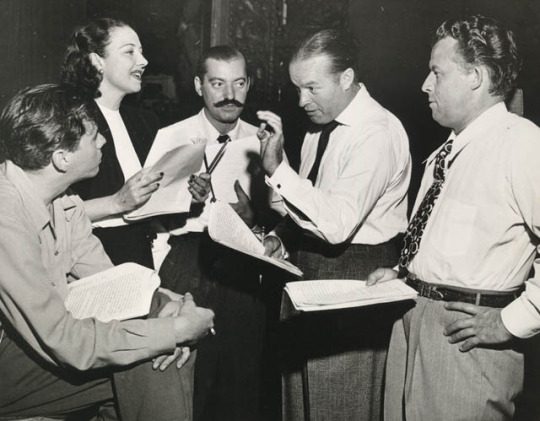
In 1945, Desi Arnaz was the orchestra leader on Bob Hope’s NBC radio show.
HOPE (about Lucy and Desi): “Lips and hands were all over one and another. I never saw a couple loving each other more after Bogie and Bacall.”
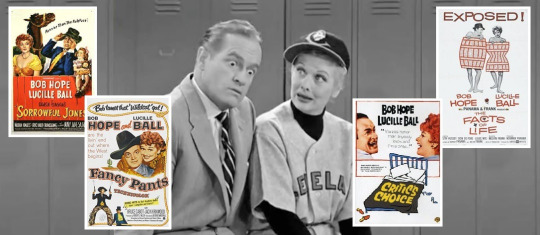
Ball and Hope had made four feature films together: Sorrowful Jones (1949), Fancy Pants (1950), The Facts of Life (1960), and Critic’s Choice (1963).
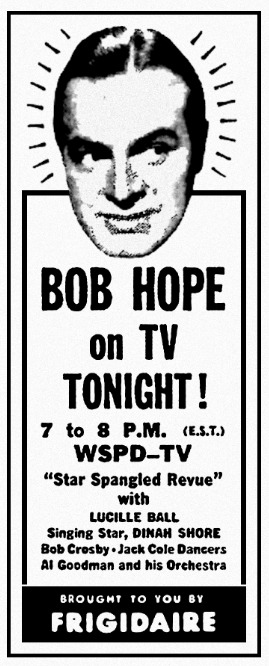
Hope and Ball first collaborated on television on September 14, 1950 on the third installment of “The Star-Spangled Revue”, Hope’s first regular television program. Lucy played the mayor of NYC and Bob her henpecked husband.

Kicking off season six of “I Love Lucy” in October 1956, Bob Hope guest-starred as as himself. The story was built around the real-life fact that Hope was part owner of the Cleveland Indians Baseball team.

Two weeks later, in one of TV’s first network cross-overs, the entire cast of “I Love Lucy” appeared on “The Bob Hope Chevy Show”. The premise of the sketch (later colorized for home video) supposed that Bob, instead of Desi, married Lucy and became her bandleader husband on the sitcom.

In October 1959, Lucy and Hope were two of many celebrities paying tribute to “Eleanor Roosevelt on Her Diamond Jubilee” aired as part of “Sunday Showcase” on NBC.

On January 10, 1960, Hope and Ball were two of the stars profiled in “Hedda Hopper’s Hollywood.” Lucille is seen in front of her Desilu Playhouse on the backlot. Standing amid a pile of suitcases, Bob Hope talks about Hollywood in general, presenting almost a monologue on the subject.
Hope:“Hedda has a fabulous fund of Hollywood knowledge. She has to wear those big hats to keep the secrets from leaking out.”

On February 15, 1961, Ball served as a presenter on “The Bob Hope Buick Sports Show.” Boxer Floyd Patterson could not attend the ceremony on the West Coast, so Hope shows footage of Lucille Ball presenting him the award on the East Coast, where she was appearing in Wildcat on Broadway.
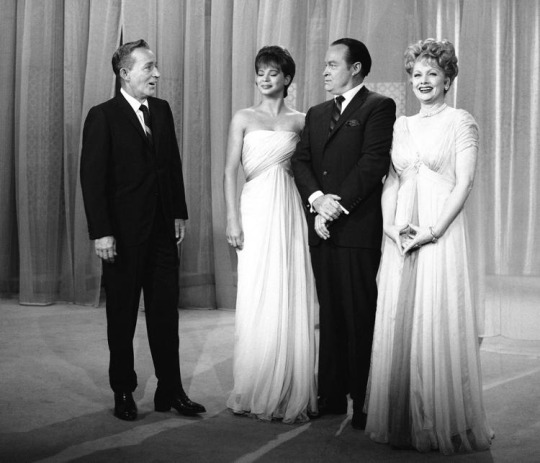
On October 24, 1962 Bing Crosby and Juliet Prowse joined Lucy for “The Bob Hope Show”. In a sketch, Lucille plays a District Attorney and Bob a gangster named Bugsy.
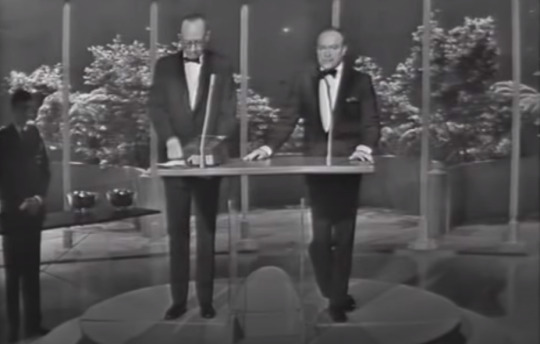
During the “Bob Hope Special: TV Guide Awards” on April 14, 1963, Lucille Ball is nominated for Favorite Female Performer. Ball is not present so a still photo of her is shown instead. The winner is Carol Burnett.
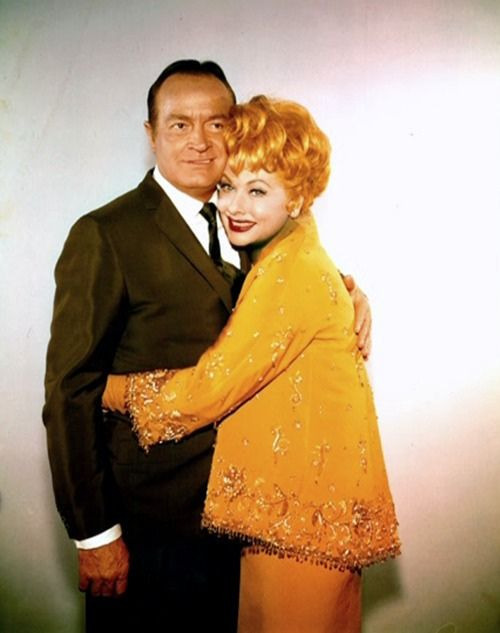
On a May 5, 1963 “Toast of the Town” (aka “The Ed Sullivan Show”) from New York City, Bob Hope and Lucille Ball promote their new movie Critic’s Choice.
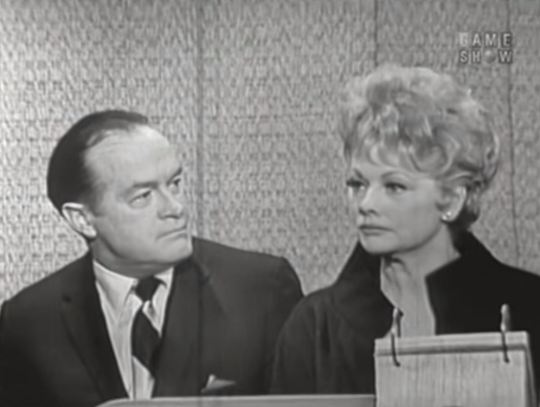
The pair continued their Critic’s Choice promotion tour that same day (May 5, 1963) by appearing on “What’s My Line?” This would be their last film together and one they both considered a failure.
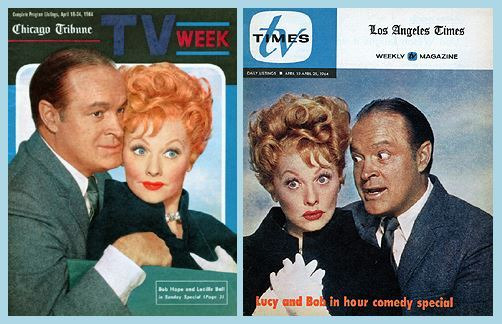
On April 19, 1964, Hope and Ball teamed for a CBS Comedy Special titled “Mr. and Mrs.” in which they played themselves and a husband and wife acting team.
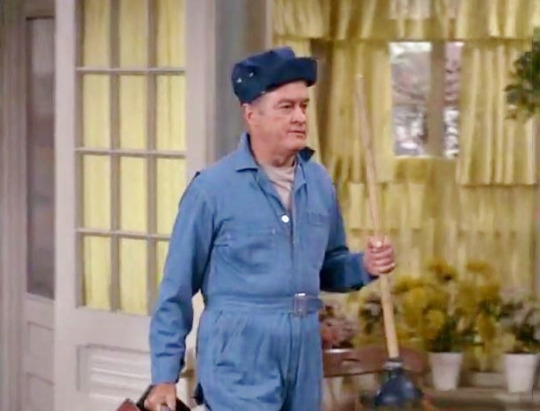
Hope made a cameo appearance in "The Lucy Show” (TLS S3;E2) on September 28, 1964, that starred Jack Benny as a plumber with hidden talents.

In “Bob Hope Presents Chrysler Theatre: Have Girls, Will Travel” on October 16, 1964, Lucille Ball does a cameo as Hope’s wife in a cast of ‘girls’ that includes Jill St. John, Marilyn Maxwell, and Rhonda Fleming.
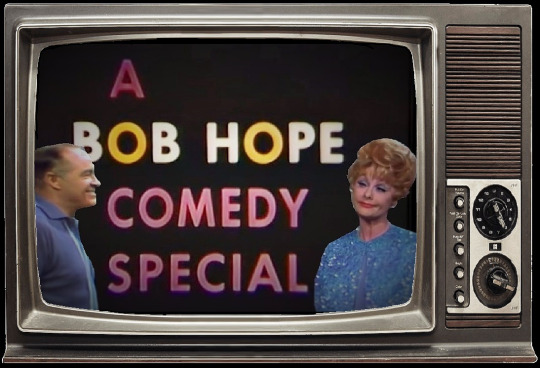
“A Bob Hope Comedy Special: Bob Hope’s Leading Ladies” on September 28, 1966, Lucile Ball played herself and arrived in Bob Hope’s bedroom on a chauffeur-driven adult-size tricycle! During their scene, old friends Ball and Hope continually crack each other up.
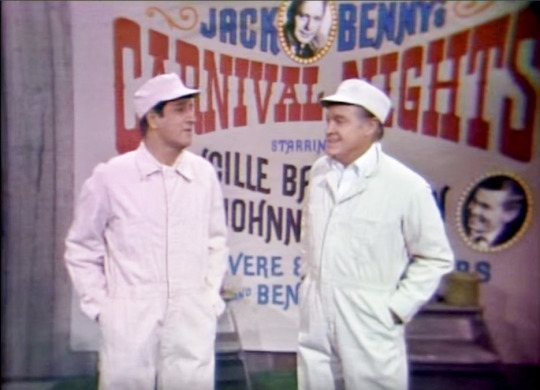
“Jack Benny’s Carnival Nights” (March 20, 1968) featured both Ball and Hope, although they did not share any scenes together.

Bob Hope was there when Lucille Ball won her fourth (and final) competitive Emmy Award on a May 19, 1968 telecast from The Hollywood Palladium. Don Adams and Bill Cosby also won.
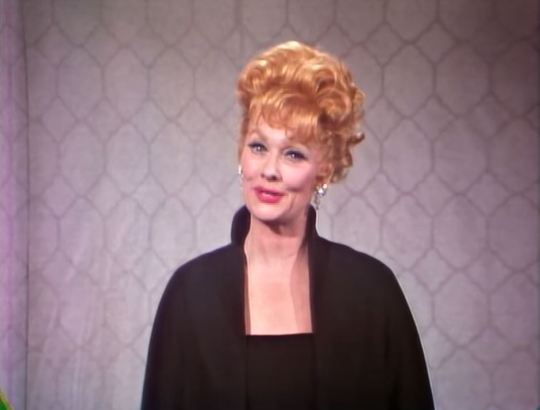
“The Dean Martin Christmas Special” (December 19,1968) featured many celebrities including Hope and Ball in (separate) cameos. Lucy promises that the kids at the City of Hope Medical Center will have a Merry Christmas.
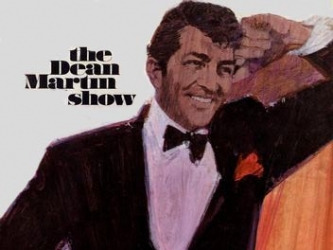
Bob Hope, Lucille Ball (and dozens of other stars) make guest appearances on “The Dean Martin Show” sixth season opener on September 17, 1970.
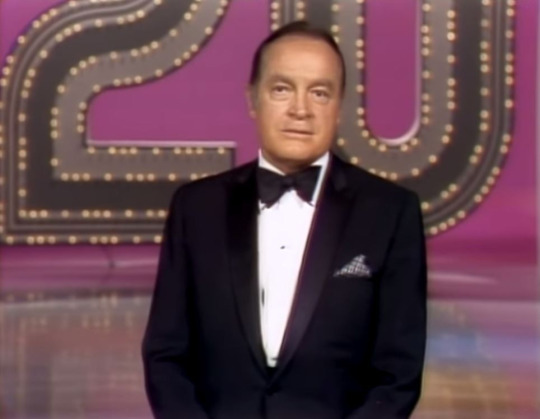
On “Jack Benny’s 20th Anniversary Show” (November 16, 1970) Lucy plays Benny’s maid, Janet. Bob does a monologue about Benny but does not share the screen with Lucille Ball.
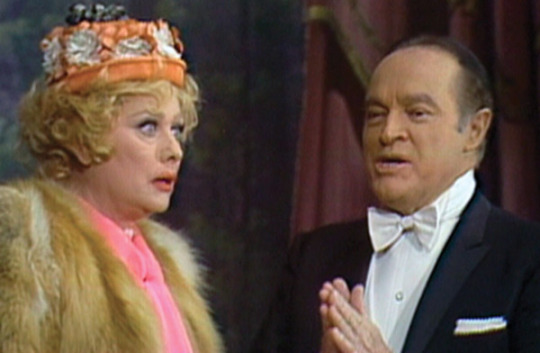
That same date (November 16, 1970) Ball appeared on “The Bob Hope Show: Bringing Back Vaudeville.” Bob plays a hypnotist who takes Lucy out of the audience to be his stooge.
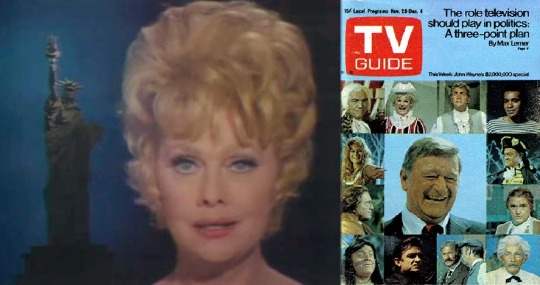
“Swing Out, Sweet Land” (November 29, 1970) was a star-studded patriotic special featuring Lucille Ball (voice of the Statue of Liberty) and Bob Hope entertaining the troops - at Valley Forge!
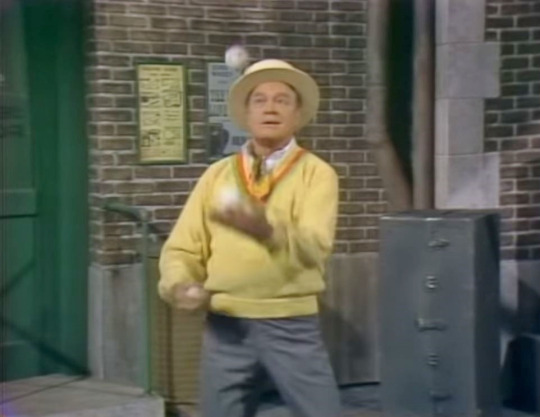
“Everything You Always Wanted to Know About Jack Benny* But Were Afraid To Ask” (March 10, 1971) featured Bob Hope in a quick cameo as a juggler and Lucille Ball plays a star-struck young Goldwyn Girl seduced by leading man Benny.
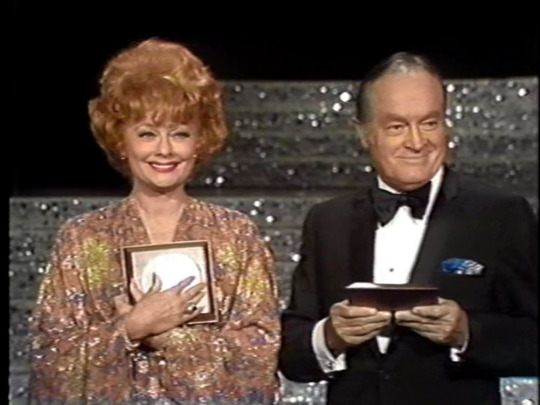
Ball and Hope were both recognized with plaques on “Zenith Presents: A Salute to Television’s 25th Anniversary” on September 10, 1972.
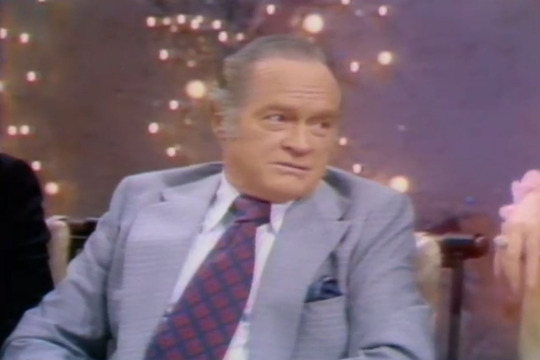
An October 12, 1973 episode of “The Merv Griffin Show” is a Salute to Lucille Ball featuring her husband and children, and her two most famous male co-stars, Bob Hope and Gale Gordon.
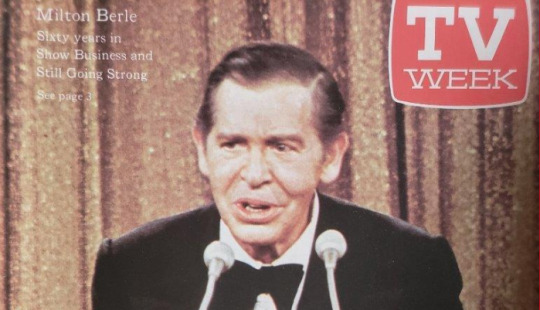
On “Show Business Salute to Milton Berle” (December 4, 1973), the Friars Club celebrate Berle’s 60 years in entertainment. Sammy Davis Jr. hosts with guests Lucille Ball and Bob Hope.

In “The Bob Hope Christmas Special” aired on December 9, 1973, Lucille Ball played herself, thinking that Bob is buying her expensive presents because he is in love with her.
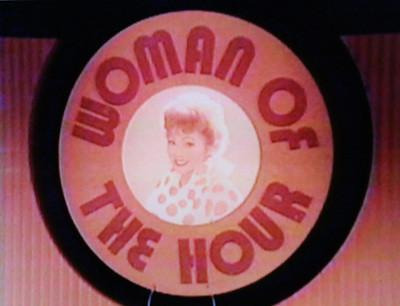
Naturally, Hope is on the dais for the “Dean Martin Celebrity Roast of Lucille Ball” on February 7, 1975.
Bob Hope: “Lucy’s always doing nice things. Even though she’s not with Desi anymore she got him a job as a dialogue coach on ‘Chico and the Man’.”
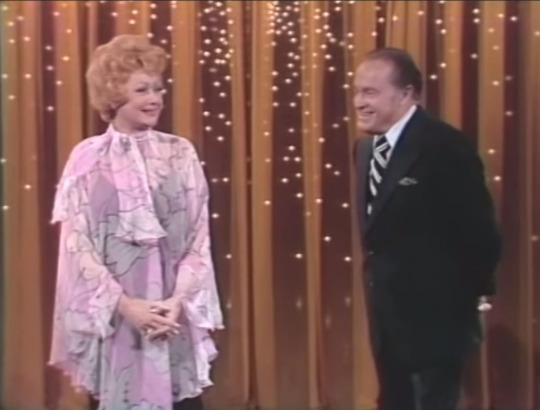
“Bob Hope’s World of Comedy” (October 29, 1969) naturally included Lucille Ball.
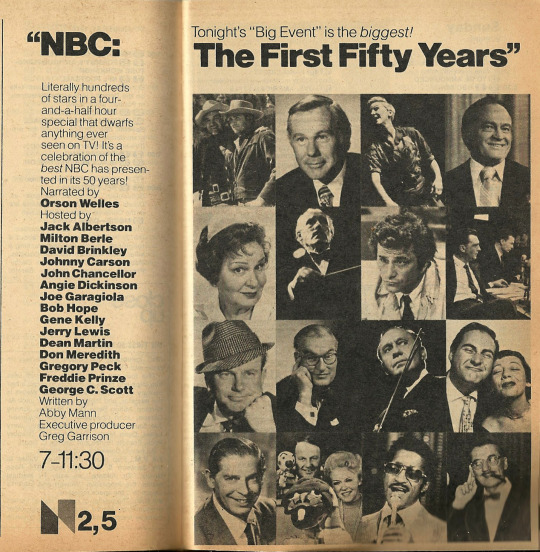
“NBC: The First Fifty Years” (November 26, 1976) was a four and a half hour extravaganza that featured NBC’s biggest star Bob Hope, but somehow also included CBS star Lucille Ball, four years before she would leap over to the peacock network.
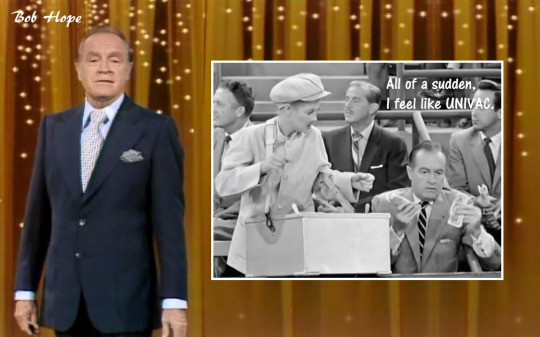
Two days, later (November 28, 1976) “CBS Salutes Lucy: The First 25 Years” includes Hope singing his signature song “Thanks for the Memory” with special lyrics about Lucy.
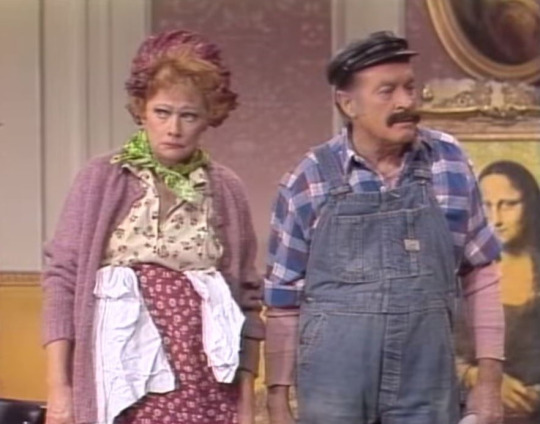
“Bob Hope’s All-Star Comedy Tribute to Vaudeville” (March 25, 1977) featured Lucy and Bob in a sketch titled “The Housecleaners”....
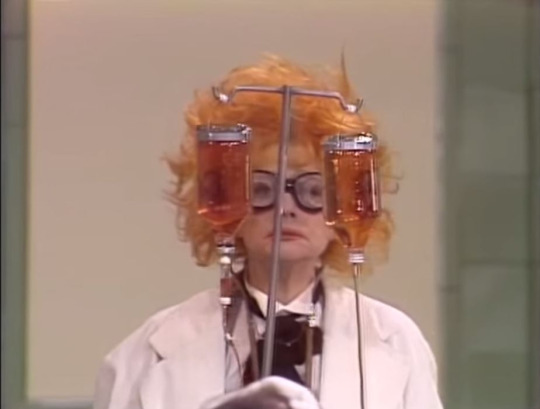
... as well as one titled “The Hospital” in which Lucille Ball is the clumsy Dr. Spinebender and Bob Hope is a heavily bandaged patient.
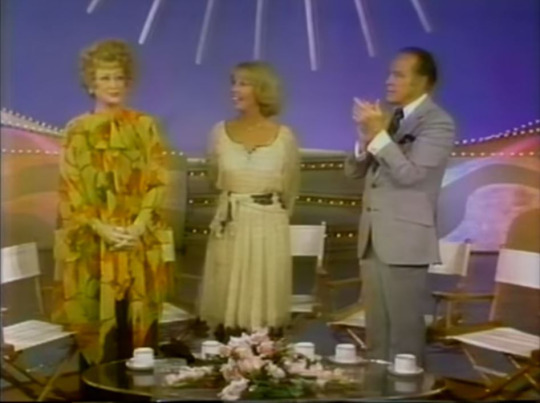
On April 15, 1977, “Dinah!” presented “Bob Hope: The Road to Hollywood” with Dinah Shore welcoming guests Lucille Ball, Rosemary Clooney, Jane Russell, Rhonda Fleming, and Dorothy Lamour.
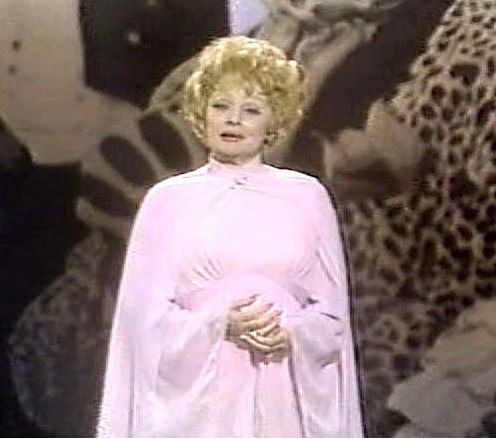
“A Tribute To Mr. Television Milton Berle” (March 26, 1978) included testimonials from Lucille Ball and Bob Hope.
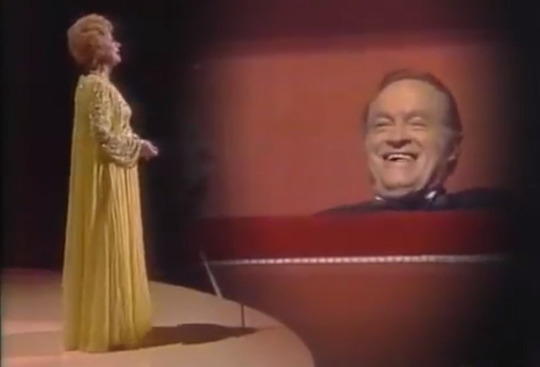
Lucille Ball took to the Kennedy Center stage to say “Happy Birthday Bob” on May 29, 1978.
LUCY: “I starred with Bob in four pictures and they were all fun, frantic, and foolish.”
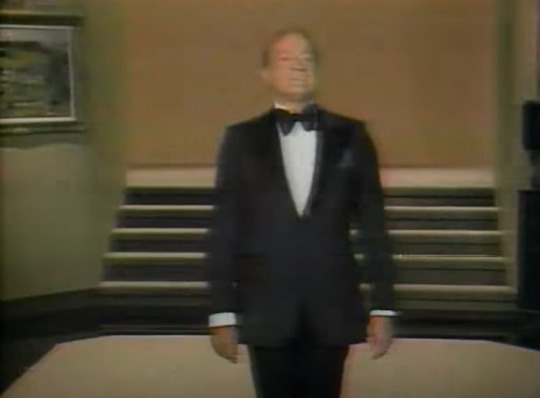
John Wayne hosted "General Electric’s All-Star Anniversary” which recalls the music, song, and comedy of the past 100 years and marked the one-hundredth anniversary of the General Electric Company with stars such as Lucille Ball and Bob Hope.
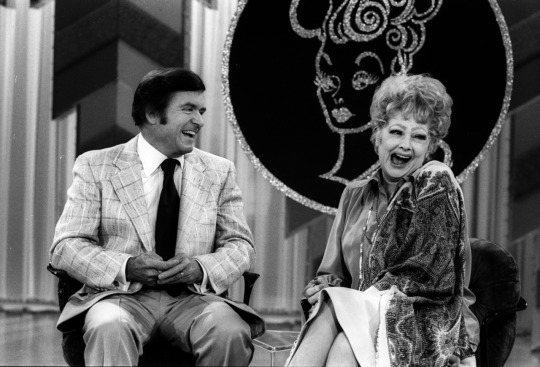
Lucille Ball is guest-host on “The Mike Douglas Show” and they interview stars that include Bob Hope (November 3, 1978).

“Bob Hope Salutes the Ohio Jubilee” (December 3, 1978) has Lucy in a flimsy negligee to get her husband’s (Hope) attention during a football game.

“The Annual Friars Club Tribute Presents a Salute to Johnny Carson” on May 6, 1979 was a testimonial dinner at Waldorf-Astoria with Bob Hope, Lucille Ball, Kirk Douglas and, of course, Ed McMahon. Lucy was accompanied by her husband and daughter.
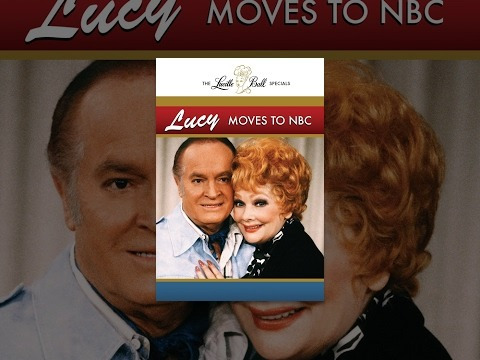
After three decades on rival networks, Lucy joins Hope as an employee of the National Broadcast Corporation (NBC), kicking things off with this special: “Lucy Moves To NBC” on February 8, 1980.
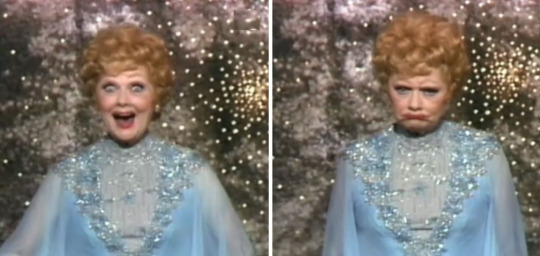
“Bob Hope’s 30th Anniversary Television Special” took place on January 18, 1981. It was a retrospect of Hope’s first 30 years on TV. Celebrating with Bob were guests Lucille Ball, Milton Berle, Danny Thomas, George Burns, Glen Campbell, Sammy Davis Jr., and many more.

On February 26, 1982, “The John Davidson Show” featured both Bob Hope and Lucille Ball.
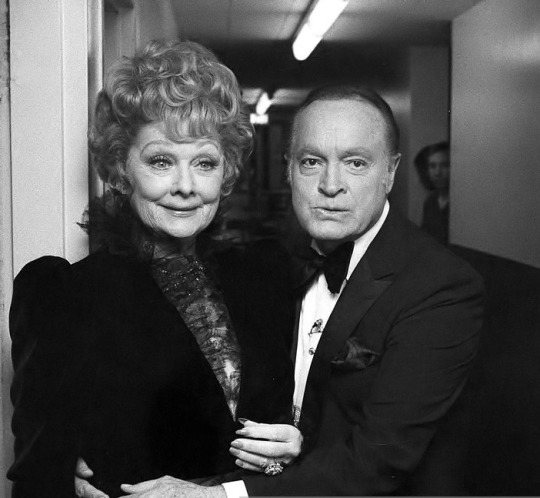
Hope takes a look back at the beautiful and funny women he has worked with over the years. Lucille Ball and more than 60 of Bob’s co-stars are presented in studio segments, as well as television and film excerpts in “Bob Hope’s Women I Love - Beautiful But Funny” aired on February 28, 1982.
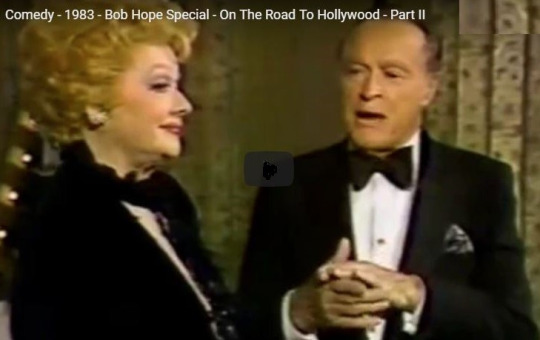
“On the Road to Hollywood - Part II” (March 2, 1983) was a tribute to Hope’s film career, with clips from many of his films and appearances by many of his female co-stars, including Lucille Ball, Dorothy Lamour, Martha Rae, Jane Russell and others.

Hope returns to the site of his 75th Birthday Special, the Kennedy Center, for another three hour special with Lucille Ball, George Burns, Kathryn Crosby, George C. Scott, and Jim Henson in “Happy Birthday, Bob: A Salute to Bob Hope’s 80th Birthday” on May 23, 1983.
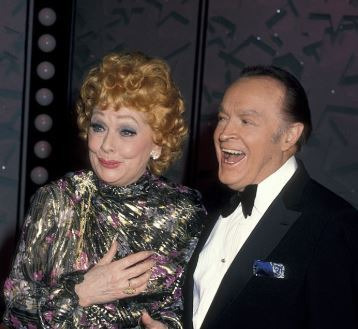
“Who Makes The World Laugh? - Part II” on April 4, 1984, answered the question in the title by presenting Lucille Ball and Hope together!
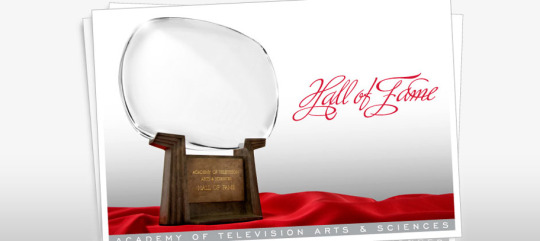
Hall of Fame winner Lucille Ball and Governor’s Award recipient Bob Hope are presenters at the “36th Primetime Emmy Awards” on September 23, 1984.
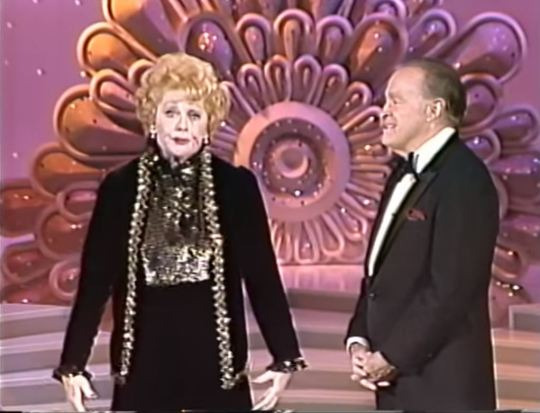
“Bob Hope’s Unrehearsed Antics of the Stars” (September 28, 1984) found Lucille Ball recounting her disastrous audition for the role of Scarlet O’Hara in the 1939 film Gone With The Wind.
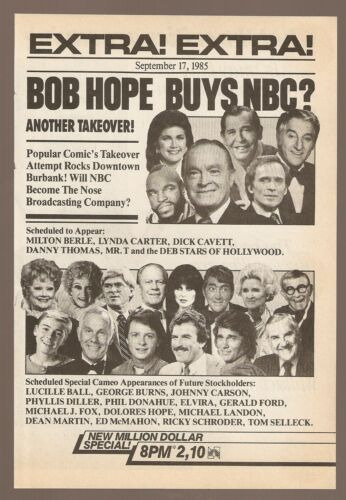
Lucille Ball makes a cameo appearance in “Bob Hopes Buys NBC?” on September 17, 1985.

An “All Star Party for Clint Eastwood” on November 30, 1986, features former honoree Lucille Ball and Bob Hope paying homage to Eastwood.

Lucille Ball and Bob Hope were part of an all-star cast for “Happy 100th Birthday, Hollywood” on May 18, 1987. This was a two-hour special on ABC TV that won an Emmy for editing.
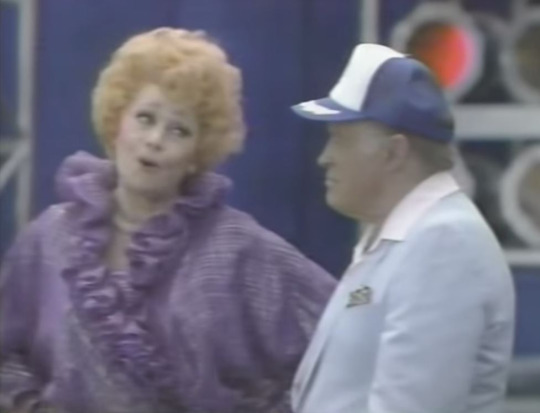
On the deck of an aircraft carrier, Bob Hope salutes the US Air Force’s 40th anniversary. Lucy and Bob sing “I Remember It Well” in “Bob Hope’s High-Flying Birthday Extravaganza” aired on May 25, 1987.
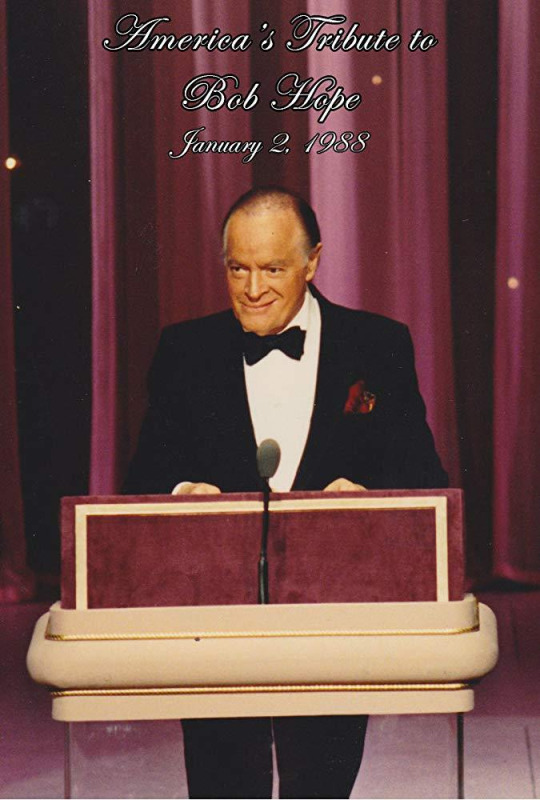
“America’s Tribute to Bob Hope” on January 2, 1988 - to celebrate the opening of the Bob Hope Cultural Center at Palm Springs, Lucille Ball and dozens of friends gather and offer comedy and musical performances to honor the building's namesake.
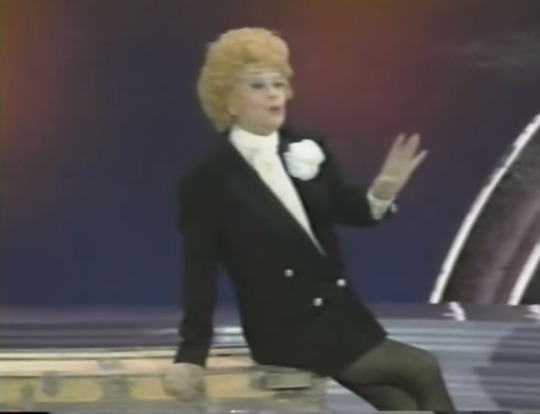
On May 16, 1988, Bob Hope celebrates the 85th of his 100 birthdays in “Happy Birthday, Bob: 50 Stars Salute Your 50 Years at NBC.” Lucille Ball sings “Comedy Ain’t No Joke,” her last ‘performance’ on television before her death.
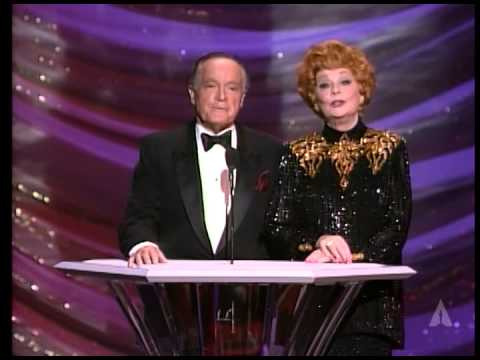
Lucille Ball’s final appearance was at “The 1989 Oscars” on March 29, 1989, appropriately alongside Bob Hope. They introduce a performance by ‘the stars of tomorrow. Lucy appears to be enjoying herself immensely, giggling at all Bob Hope’s jokes.
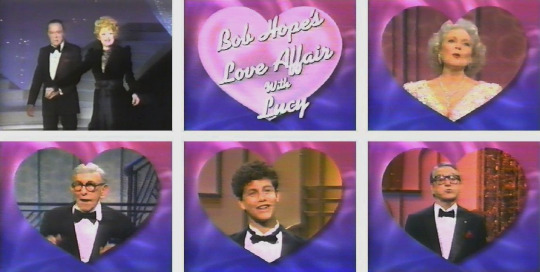
After Ball’s passing, Hope hosted “Bob Hope’s Love Affair With Lucy”, a tribute which aired on September 23, 1989. Hope invited such stars as Betty White, George Burns, Danny Thomas, and even Kirk Cameron, to pay tribute to the Queen of Comedy.
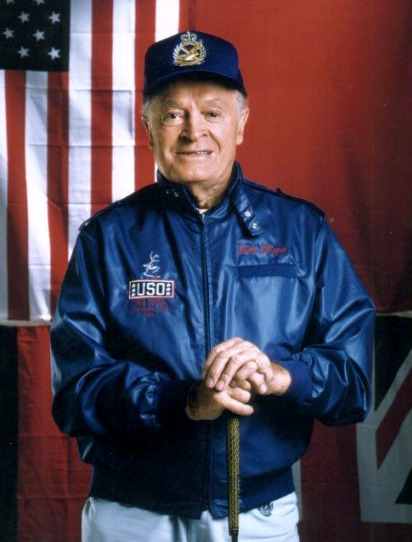
“100 Years of Hope and Humor” on April 23, 2003 was the last television appearance by Bob Hope. This tribute aired 29 days before his 100th birthday and 95 days before he passed away.
HOPE (on turning 100): “I don't feel old. In fact, I don't feel anything until noon. Then it's time for my nap.”
Thanks for the memories, Bob. RIP
2 notes
·
View notes
Text
Here you go you terrible enablers. It’s not quite slash but it could be seen as the start of it XD
(I’ve been writing so much for the TW fandom lately that it was surprisingly awkward to get back into HP, but I think it smoothed out in the end.)
Summary: In which Bill dies and somehow gets stuffed into another him, in another universe. He doesn’t mind so much when he realizes everything is just better in this new world, and, well, he was killed. He deserves a nice next life without feeling guilty about dying, doesn’t he? So he goes through school, works his way to master curse-breaker again – much faster this time, and he’s lauded as a genius in his field – because he loved what he did and still does. Years later, he comes back from abroad and meets his youngest brother’s new runes-prodigy friend. He takes one look at one of Hadrian Evans’ ward schemes and just knows.
“‘Hadrian Evans’? Seriously?” is the first thing he demands, because it’s also the only thing in his head aside from wondering if he’s more thrilled that he might be right in his assumption or more afraid that he might be wrong.
Hadrian slowly straightens from where he was bent over the runes he’s been linking up. He turns to look at Bill, brow crinkling in confusion. “What?” He glances down at the half-finished ward scheme, worry creeping into his expression as he begins checking over his work. “Did I get something wrong?”
Something like relief loosens the knot in Bill’s chest, because Harry always did this too, no matter how many people – Bill included – marvelled at the sheer speed and ease with which the then-teenager picked up runes, Harry always seemed to maintain the odd notion that Bill would always be better, which meant that whenever Bill asked a question even remotely related to their ward designs, Harry always assumed it was because he’d made a mistake.
Of course, this time could just be a coincidence – Ron’s probably told Hadrian about his curse-breaker brother, and Hadrian might think Bill caught something he didn’t, but-
“Where?” Hadrian asks next, and the way he scans his work, fingers tracing the lines without actually touching the ink, is exactly the same. For Merlin’s sake, he even looks like Harry Potter, everyone’s noticed, even Ron’s mentioned it-
“Your version here is an absolute git,” Bill says without actually meaning to, but he’s a Gryffindor at heart, never one to beat around the bush, and now that he’s sure – mostly sure – that this is his Harry, the Harry he knows and trained and fought beside, a part of the past he’s missed like a chopped off limb despite how much better his new life has been compared to a war-torn world, all he can think to do is measure his Harry to the one born in this universe and find the latter terribly lacking.
Harry – Hadrian, whatever – freezes, back still turned to Bill. When he finally does turn around, his eyes have brightened to that eerie Avada Kedavra green, unblinking and entirely focused like nothing else matters.
Bill’s seen that look before too, usually right before Harry stormed out onto the battlefield and tore his way through Death Eater ranks like he knew no fear.
“Bill,” Harry- Hadrian says at last, and for all that it doesn’t come out sounding like a question, there’s a wealth of disbelief underscoring his voice. “What did you just- That’s impossible.”
Bill releases a bark of laughter, and it sounds slightly hysterical even to his own ears. “Considering we’re both here and alive, I don’t think impossible is a word either of us should use.”
For a moment longer, Harry- Hadrian remains so still that it looks like he isn’t breathing, but a blink and a shaky exhale later, Bill staggers back and loses his footing as another body slams full-tilt into his, and they go arse over teakettle onto the floor with startled twin shouts.
Bill curses when his head cracks against the leg of a chair, but that doesn’t stop him from throwing an arm around Harry and clutching back just as tightly as the white-knuckled grip on his shirt.
For a while, they just stay like that, Bill flat on his back, Harry huddled on top of him, and there’s been very few occasions in their lifetimes when he looked at Harry and thought fragile, even when the twins told him about cupboards and catflaps and brought to the Burrow a boy with a too thin face and too jaded eyes because there was almost always a constant kind of strength in him too, but this is definitely one of those times.
“…Did you die?” Bill finally asks into the silence. It’s the only question that makes it past his lips, rather than did we lose the war or how many of us were killed. It feels like the most important one to ask at this point.
Harry stiffens in his grasp. “You did,” He retorts, and he flings it out almost like an accusation, only to fall short and land in a confession steeped in guilt.
Bill heaves a sigh and thinks back to the vague, ghost-like sensation of having his entrails torn out and the wretched ring of Fleur’s scream in his ears. Those two things at least have always stayed with him, chasing him through his dreams and haunting his waking moments when he lets them. Sometimes, he remembers more, but mostly he tries not to.
Still, he curls fingers in the collar of Harry’s shirt and gives him a firm shake. “You better not have lived all these years blaming yourself, Harry.”
A distinctly remorseful silence follows him, and Bill sighs again. “You really need to learn to let these things go.”
Harry jerks up, hovering over Bill instead, a glare sharpening his expression. Neither of them lets the other pull away very far though, Harry still close enough that their knees knock together, Bill’s arm still draped over Harry’s deceptively thin shoulders.
“You don’t get to say that when you’re not the one left behind!”
Bill winces, then tightens his grip when Harry moves like he wants to get up. “Stop that. You know I didn’t mean it like that.”
Harry huffs and scowls furiously off to the side. Bill blinks at him. “You’re not going to cry on me, are you?”
He gets a dirty look for that one, but there’s no mistaking the momentary brightness in Harry’s eyes that has nothing to do with his magic surging up this time, or the similar wetness that stings Bill’s own eyes.
“Shut up,” Harry mutters, propping himself up by poking sharp elbows into Bill’s ribs, which hurts – ouch, you brat – but he also deflates, anger and sorrow receding, so Bill doesn’t call him out on it.
“I’m fifteen all over again,” Harry adds, sounding more than a little disgruntled. “Do you remember the angsty little twit I was when I was fifteen? This is an improvement.”
Bill snorts, amusement softening the desperation that snapped between them the moment they both realized who the other is. “Well I wouldn’t go that far. To be fair, you had plenty of reasons to angst. We did… quite a bit of a disservice to you that year, treating you like an unruly child and keeping every secret under the sun from you. Even when it was about you.”
Harry shrugs, and enough time has passed that it doesn’t seem to bother him anymore, but he also looks wistful in a way Bill recognizes from the mirror right after his mother called everyone down for dinner or his dad rambling about muggle things or his siblings getting under feet.
“He’s alive here,” Harry says abruptly. “Sirius. Almost everyone’s alive here.”
Bill can’t quite find the right words in response to that but he musters a bracing smile in the face of the sheer unfairness of it all, and he doesn’t tease when Harry’s forehead drops back onto his chest.
It’s another minute before he remembers. “Harry? You didn’t say. Did you di-”
Rapid footsteps interrupt them, and before either of them can even think to move, Ron bursts into the library clutching a haphazard stack of parchment, hollering, “Hadrian! Fred and George said if I don’t ask you to-”
He chokes on the rest of whatever he was going to say, almost tripping over his feet when he catches sight of his brother and friend… well, pretty much cuddling on the floor. Bill is man enough to admit it, and he finds himself more than a little amused as he watches Ron’s eyes go round, mouth hanging open and face flooding with colour until it clashes horribly with his hair, right to the tips of his ears.
“I- What- You-!” Ron splutters, and on top of Bill, Harry lets out a rusty chuckle, clearly finding their situation as humorous as Bill does.
“Sorry!” Ron finally squeaks before wheeling around and fleeing back out the door as if Ginny’s Bat-Bogies are after him. The door slams shut behind him but they can still hear him yelling at the twins, “Go look for him yourselves! I can’t find him! And I definitely can’t see him!”
“…Subtle,” Harry remarks, finally rolling out of Bill’s lax grip to let them both up.
“Ron? Oh, always,” Bill sighs ruefully, raking a hand through his hair before clambering to his feet and giving Harry a hand up. “Looks like you’re needed elsewhere.” He pauses. “Could we talk later? I know it’s hard for you but…”
Harry offers a lopsided smile that’s mostly genuine if also a little tired. “Of course. You… You should know. Anything you want.”
Bill manages a smile in return, one that turns into a small grin when he reaches out to ruffle Harry’s hair and gets an automatic irritated hiss in return. He watches the younger wizard leave before turning back to the ward scheme laid out on the table. Even only half-done, the thought and detail that have gone into it are…
Perfect, as always, Bill thinks fondly before reaching for the quill to finish the rest of it.
#hadrian evans#bill weasley#bill x hadrian#fanfic#cywscross#ron weasley#c'est la vie#might come back to title this later if i write more parts for it#bill/hadrian reincarnation
308 notes
·
View notes
Text
7 years ago: Boardwalk Hall - Atlantic City, NJ - 2010
Phish • October 31, 2010 • Boardwalk Hall • Atlantic City, NJ
Set 1: Frankenstein[1], Big Black Furry Creature from Mars, Ghost -> Spooky > Divided Sky, Roses Are Free > Funky Bitch, Boogie On Reggae Woman, Stash, Character Zero
Set 2: Fat Man in the Bathtub[2], All That You Dream[2], Oh Atlanta[2], Old Folks Boogie[3], Time Loves a Hero[4] -> Day or Night[3], Mercenary Territory[3], Spanish Moon[3], Dixie Chicken[3] -> Tripe Face Boogie[2], Rocket in My Pocket[3], Willin'[5], Don't Bogart That Joint[6], A Apolitical Blues[2], Sailin' Shoes[2], Feats Don't Fail Me Now[3]
Set 3: Down with Disease[7] > Back on the Train > Gotta Jibboo > Camel Walk, Suzy Greenberg > Wilson > Harry Hood > The Horse > Silent in the Morning > You Enjoy Myself
Encore: Julius[4]
[1] Page on keytar. [2] Phish debut; Giovanni Hidalgo on percussion. [3] Phish debut; Giovanni Hidalgo on percussion and Aaron Johnson, Stuart Bogie, Ian Hendrickson-Smith, Michael Leonhart, and Eric Biondo on horns. [4] Giovanni Hidalgo on percussion and Aaron Johnson, Stuart Bogie, Ian Hendrickson-Smith, Michael Leonhart, and Eric Biondo on horns. [5] Phish debut; Page on bass, Mike on piano, Trey on drums and Fish on vocals. [6] Phish debut; A cappella. [7] Unfinished.
Page performed Frankenstein on keytar. Ghost included a San-Ho-Zay tease from Trey. Spooky was performed for the first time since April 14, 1993 (751 shows). The second set "musical costume" was Little Feat's Waiting for Columbus. Join the Band (the first track of Waiting for Columbus) was played over the P.A. before the start of the second set. Subsequently, Phish was introduced as "Little Feat" before Fat Man in the Bathtub. In the tradition of some of Phish's previous crowd experiments in the early '90s, flyers explaining a new Secret Language prank were included in the Phishbills that were passed out to fans as they walked into the show. The prank, designed to confuse those who would later listen to the recording, consisted of an announcer introducing Phish (as Little Feat). When the announcer would say a letter of the band FEAT ("Give me an F!"), the crowd would respond with letters corresponding to PHISH ("P-H!"). All of the songs in the second set other than Time Loves a Hero were Phish debuts. All of the songs in the second set, other than Don't Bogart That Joint and Willin', featured Giovanni Hidalgo on percussion. A five piece horn section consisting of Aaron Johnson, Stuart Bogie, Ian Hendrickson-Smith, Michael Leonhart and Eric Biondo joined the band for Old Folks Boogie, Time Loves a Hero, Day or Night, Mercenary Territory, Spanish Moon, Dixie Chicken, Rocket in My Pocket and Feats Don't Fail Me Now. Willin' featured Page on bass, Mike on piano, Trey on drums and Fish on vocals. Prior to the piano solo at the beginning of Willin', Fish remarked, "That's supposed to be Bill Payne on the keyboard." Don't Bogart That Joint was performed a cappella. Trey introduced the guest musicians at the start of Feats Don't Fail Me Now and Page teased "Charge!" during the introductions. At the conclusion of the second set, the entire band marched the perimeter of the floor. Disease was unfinished, was initially botched, and had to be restarted, prompting Fish to declare, "This one's off our album." Julius featured Giovanni Hidalgo and the Waiting for Columbus horn section.
2 notes
·
View notes
Text
Pilot-induced oscillations: are you a sinner or a victim?
You have probably seen this before: a GoPro video showing a pilot struggling with large inputs on the yoke, giving the throttle a hard time with either high thrust or idle power, and after a fair amount of time focused on that demanding approach, a smooth touchdown followed by a reassuring smile. On the title of the video, something mentioning a high crosswind component, and below, the comments saying that the pilot nailed it like a boss. Did he or she?
It is no secret that pilots like to hand fly—after all, that is what make them aviators. No one watched Top Gun during their childhood and started dreaming about monitoring an autopilot-flight director system for seven hours straight. So, although the industry has slowly but surely turned airline pilots into managers, to the extent that it is itself now concerned about their hand flying capabilities, we, on the other hand, kind of pardon the boring hours of paperwork and flight path monitoring for the sake of those couple minutes taming the beast.
Wrestling the airplane to the runway—why?
Yet apparently some colleagues are taking it too seriously, and their thrilling performances are a great reminder to ourselves. After all, it requires a high level of self consciousness for one to know exactly how he or she is dealing with the flight controls. Recording yourself flying in video, instead, is a very useful tool for this matter, and although understandable, it is sad that most airlines do not allow their pilots to do so. Since you are very focused on flying, looking out the window and to the instruments, and your hands are responding almost automatically, to notice what movements you are actually doing is not that simple. Nevertheless, some people have recorded it, and after posting themselves on the internet, is time for us to look at them and try to figure out if we are doing the same unintentionally.
Imagine yourself flying, and while you are preparing for an approach, you encounter a challenging, windy condition ahead. The good side of it is that you are going to be more focused on the safe outcome of that approach, so the chances of you ruining your touchdown, for example, are greatly diminished. It is not uncommon to see basic mistakes being made in good weather with calm winds, since complacency tends to kick in and get us relaxed. But how do high winds affect our aircraft?
First of all, there are limitations we have to observe. Some are imposed by your airline policy, others by the insurance company policy, and besides those, for those pilots who are fortunate enough to fly their own aircraft, it is always advisable for them to have their own personal limits. When it comes to the manufacturers, usually the word used is “demonstrated” crosswind component. That is not exactly a limitation: anyone who has flown a Cessna 152 long enough knows it handles crosswinds perfectly well above twelve knots, if properly dealt with.
But having hard limits on your operations, either from your experience or from the operator that pays your bills, is healthy. In the airlines we are talking about crosswinds up to forty knots, and although such conditions would keep most light GA airplanes on the ramp, in major airports around the world it is just another day at the office—probably followed by a beer and some goods stories shared far from home.
Having said that, pilots from all types of aviation and all levels of experience fall into the pilot-induced oscillation (PIO) trap. From an F-22 Raptor test pilot to a Boeing 737 captain, not excluding several single engine piston students and instructors, the over control is just like the controls themselves: all over the place. But why does that happen, especially in high wind conditions?
Let’s start from the basics.
Every action has a corresponding reaction of same intensity but opposite direction: this is one of Newton’s laws. So this is pretty much the way an airplane, an inherently stable flying machine, goes up, down, and to whatever side it has to: by changing the control surface positions, leading to a reaction of the whole airframe in the air.
Now during a final approach, the objective is exactly the opposite: to remain on a constant flight path that will eventually take the airplane to a touchdown on a predetermined portion of the pavement ahead, no matter how dynamic is the atmosphere around it. But then there’s the wind. It can come from either direction, so a tailwind tends to make you float, to approach too fast, and pilots usually have fairly low limitations in order to keep us in the space available for us to stop upon landing.
Headwinds, on the other hand, are usually welcome, and since it is unlikely you’ll find any headwind capable of making your aircraft to fly backwards, there are no real limitations regarding them (other than for autoland systems). But, since high winds, even headwinds, normally change in intensity the closer you get to the ground and are often associated with turbulence, some kind of work on the power is going to be required for sure. As usual, the gold rule, “pitch for speed, power for altitude,” goes without saying.
Even airlines pilots can occasionally be accused of “bull riding.”
But it is with crosswinds that our bull riders are more prone to shine. And I say that from experience: I was one of them for a fair amount of flight hours, and it took an instructor’s advice to make me realize what I was doing wrong. Just like pilots in movies who do sharp hand movements and make confident statements using sunglasses to look cool, the same coming from a real pilot on a real flight had no use other than for dramatization. And we will get to that in a minute. First let’s review the three main crosswind landing techniques. Crab, decrab, and sideslip.
Landing in a crab means you are not correcting for the wind with the wings. Instead, you are flying wings level all the way to the ground, while your nose is pointing into the wind, relying on the natural reaction the airplane has when affected by any sort of crosswind. Although it might be easier, since all you need to do is keep flying in the direction of the runway and its aiming point without messing with the rudder while flying, this technique is not practical for all types of airplane. Conventional gear airplanes can handle it as long as you touch with the main first, and narrow body aircraft can usually do it on wet runways with ease, and even on dry ones with very high crosswinds (if coupled with a sideslip). But the widebody jetliners are the ones that take more advantage of it, because its robust bogie-mounted main gear can withstand some serious crab upon touchdown, tilting the whole machine back to the runway orientation almost by magic, especially with the modern, fly-by-wire systems behind the scenes.
The decrab method consists of turning the crab approach into a sideslip during the flare, which is so quick and precise that it leaves no room for funny inputs by the pilot and works well with pretty much any airplane. This is true especially when ground clearance by the engines or wings might be a factor, even at small bank angles.
But then we have the pure sideslip—the method of excellence for airplanes like narrow body jetliners (which would end up in the grass if crabbing into a dry runway) or single engine pistons (which, without this technique, would ruin their tires painfully as they touched down in a decent crosswind).
The sideslip method has a beauty all its own. It might not be as elegant as the crab when seen from outside, but it requires a decent amount of coordination on the flight controls by both human and machines—yes, automated landing systems use the sideslip, and this is the main reason why they have relatively low crosswind limits. The Boeing 787, for example, can handle up to 25 knot crosswinds, down to the roll-out, even on one engine. How amazing is that?
But humans can land in much more severe crosswinds, simply because we can add some crab into it and, of course, we have the capacity to react in a satisfactory way to quick changes that the computer would probably find too puzzling. So this is the perfect—although not only—scenario. You are approaching in a crosswind and choose to do it with a sideslip. Since, as mentioned before, turbulence is often associated with high winds, now you find yourself having to adjust to the changing movements of the airplane every tenth of a second, and that requires from you all your hard-earned skills. Suddenly, you are fighting the universe like there was no tomorrow, and either you are doing it thinking it is quite the right way to do it, or you are not even noticing the hard time you are giving to the airplane. Where does that come from?
To crab or to slip, that is the question.
In Portuguese, we have a very ironic expression to define it: “vento de cabine,” or in a direct translation, “cockpit wind.” Yes, you got it right: most of your corrections on the control were not even necessary in the first place, and could even be only a response to some overcorrection you did just before. That is why it is technically classified as pilot-induced oscillation. Most of the movements the airplane is making are a direct result of the pilot’s inputs. And if those inputs are not needed for any practical reason, then they are nothing but the pilot fighting himself, using the airplane as the battlefield.
How silly can it get? Well, a bit more. You see, even highly experienced, fly-by-wire aircraft pilots do it here and there, and many of these airplane types are able to distinguish the pilot’s inputs from the wind effect, thus correcting the latter to make our life easier. So, if you start correcting something that three flight computers already did, well, then it gets really embarrassing.
Some people got the bad habit during basic and even advanced training, from instructors who used to do it and made it look right. Others had this tendency naturally, increased by self confidence, and were never properly addressed by anyone they’ve flown with. The fact is, that is an obviously wrong thing to do. As you make large and quick inputs in a small airplane, you are exposing the airframe to loads it might not have been designed for. And if you are flying a big jet, then the whole inertia involved in airplanes that can have the area of an Olympic pool or even a city block, makes these quick opposite direction control inputs ineffective altogether—not to mention what your passengers are going to experience in the back.
So, if you have the chance to record yourself flying during a gusty approach, do it. Then analyze honestly your performance and come up with ways of improving it, if needed. If you can’t place a GoPro on your operator’s $250 million airplane, that’s also fine: the next time you fly into a windy destination, pay attention to the way you are acting on the controls. Do it gently, with small amplitude inputs, and wait for the airplane to react before you make your next move. Most of the adverse airplane displacement imposed by the wind is momentary, and it is not uncommon to end up where you were half a second before without doing anything—especially if you have a fly-by-wire system in normal mode assisting you.
One thing is for sure: there is absolutely no need to deal with the stick and rudder as if you were playing the drums.
The post Pilot-induced oscillations: are you a sinner or a victim? appeared first on Air Facts Journal.
from Engineering Blog https://airfactsjournal.com/2020/07/pilot-induced-oscillations-are-you-a-sinner-or-a-victim/
0 notes